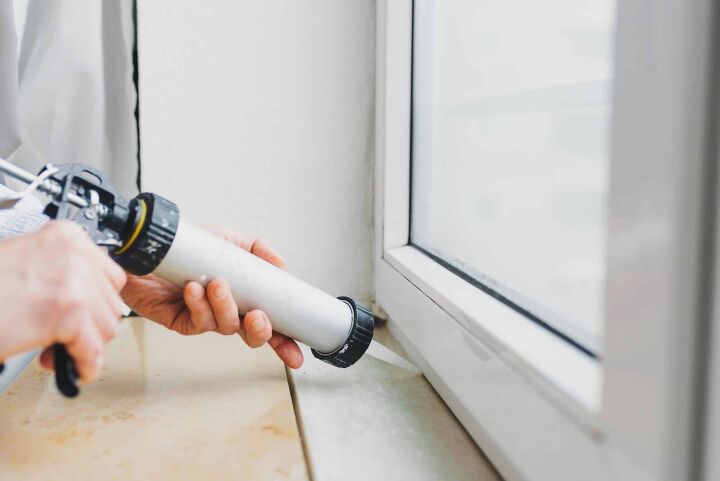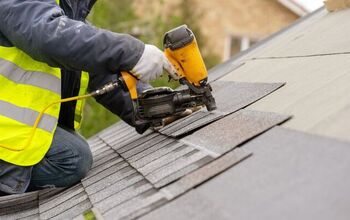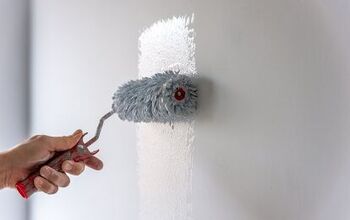Can You Put On A Second Layer of Caulk?

You can use caulk for many things from sealing to waterproofing. This useful substance also comes in different materials from latex to silicone and rubber to polyurethane. In fact, with the right type of caulk, you can do just about anything. But is it okay to layer caulk or to use new stuff over the old caulk?
Using layers of new caulk is actually suggested in some situations where the first layer may shrink as it dries. However, putting new caulk over old caulk is not recommended. This is because most types of caulk will not stick to the old stuff. It depends on what the old caulk is made of. If it is silicone, you will need to remove it because nothing sticks to it.
If there are uncaulked surfaces on each side of the area you need to caulk, you can put new caulk over it because the new caulk will stick to the uncaulked surfaces on either side. However, it is best to remove the old caulk and clean the area with rubbing alcohol first.
Do You Need Handyman Services?
Get free, zero-commitment quotes from pro contractors near you.

How to Remove Old Caulk
There are a variety of ways to remove the old caulk. It typically depends on what type of caulk you are replacing. You can use a utility knife to cut elastic caulk from smooth surfaces. However, not if the length is longer than 300 feet.
Silicone caulk should be removed with a silicone remover such as Goo Gone or WD-40. You can also use a razor tool or blade scraper. When using a scraper or razor, be sure to tilt it at a low angle and push softly. If the caulk is acrylic or fairly new, you can try to soften it with isopropyl alcohol. But be careful not to get it on the uncaulked surfaces.
After you get rid of the old caulk, clean the area with some kind of household cleaner or a wire brush. Wipe it with a clean cloth and let it dry before you apply any new caulk. You should also make sure you are using the right type of caulk.
Different Types of Caulk
Caulk is any water resistance substance that seals joints and cracks between materials. They are made from any flexible polymer that expands and typically does not crack. The type of caulk you use depends on what the job is.
- Silicone caulk is waterproof and will not crack or shrink, making it the best choice for use around sinks, showers, and tubs. But it is not suitable for any kind of painting applications because the paint will not stick well.
- Acrylic caulk is easy and fast, making it the best for quick jobs. But it does not repel moisture and it can crack or shrink over time.
- Latex caulk is best for painting projects since it dries quickly and sticks to drywall, wood, and masonry. It is easy to paint over and cleans up easier than most kinds. That is why latex caulk is also referred to as painters caulk.
- Vinyl latex caulk has all of the benefits of painters caulk but lasts longer. This makes it a good choice for outdoor jobs, but it is not as flexible as latex so do not use it where contraction and expansion is going to be an issue.
- Tile sealant is another type of acrylic caulk that is waterproof but is only good for small areas and repairs. It is mold and mildew resistant but will not last long in a shower or tub area. Using it as a floor tile sealant or for kitchen or bathroom tiles on floors or walls is usually okay though.
- Siliconized acrylic caulk is easy to use like acrylic but has the durability and strength of silicone. This type of caulk is good for use on glass, metal, tile, and porcelain. It can also be used outside.
- Adhesive caulk, or liquid nails, will stick to anything and will stick permanently. When you have two surfaces that you want to be stuck together forever, adhesive caulk is the right choice. Some are even water-resistant and do not mold or mildew.
- Polyurethane caulk or spray insulation expands to fill large holes and gaps. It can be used in window jambs, exterior pipes, and electrical outlets. It is also often used to block holes from pests like mice and rats.
- Butyl Rubber caulk is for outside use and is mostly used in roofing jobs, gutter work, or chimney repair. This stuff is messy but will hold its own outside no matter where you put it.
- Asphalt caulk is another type used outdoors only. It is often used for flashing and shingle repair and works well in any area where there is no sunlight.
- Mortar caulk is flexible and works great for sealing cracks and gaps in stone, brick, and concrete. In fact, it is like concrete in a tube. It is difficult to work with though and is gray and textured.
- Fireproof caulk is a red type of sealant that fills cracks, gaps, and holes. It is most often used in plumbing or framing to seal holes in structures.
Tips For Caulking Over Old Caulk
If you have to put the new caulk over the old stuff, or if you are caulking a deep or wide spot, you can do so as long as it is not silicone. Also, make sure that they are made of the exact same ingredients. If the two are different, they can separate over time. Here are some tips:
- Make sure the caulk is dust free and clean. Wipe it with a soft cloth to be certain.
- The caulk also has to be completely dry before putting another layer on top.
- You can use a fan or heater to dry the caulk and surface if it is wet.
- It is okay to caulk over small cracks but not those that are too exposed.
- Make sure the old caulk is perfectly sealed and adhered before putting new caulk on.
What if the Old Caulk is Black or Shrinking?
Black caulk may be mold, mildew, or just dirt. If the caulk is in a wet or moist area, it is likely to be mold or mildew. In some cases, If the caulk is shrinking or pulling away from the tile or other surfaces, you may be considering just layering the caulk over it to seal it up. Just be sure to clean it first and make sure the old stuff is not silicone.
Do You Need Handyman Services?
Get free, zero-commitment quotes from pro contractors near you.

What is the Proper Way of Using a Caulk Gun?
Place tape around the edges of the area you are caulking if you do not want it to get on other surfaces. If you are not using a caulk gun, go ahead and cut the nozzle and squeeze the material where you need it. This is okay for small jobs, but larger jobs will require a caulk gun.
- Press the release on the back of the gun and adjust the plunger.
- Use the puncture tool to break the seal.
- Place the caulk cartridge into the gun.
- Make sure the plunger is against the bottom of the cartridge.
- Holding the tip at a 45-degree angle, squeeze the trigger gently and evenly.
- Move the gun along the crevice or crack as you squeeze.
- When the trigger reaches the handle, release it and it will spring back into place.
- Repeat until you fill the space you are working on.
One thing to note is that using more caulk than you need is not recommended. Using too much can cause the excess to harden and dry out, which causes more shrinkage.
Related Guides

I am a DIYer who loves writing about anything home-related. When I am not writing, you can find me studying for my PhD in Psychology, photographing nature, and swimming at the lake with my grandkids.
More by Patricia Oelze














![10 Best Cordless Leaf Blowers – [2022 Reviews & Ultimate Guide]](https://cdn-fastly.upgradedhome.com/media/2023/07/31/9070789/10-best-cordless-leaf-blowers-2022-reviews-ultimate-guide.jpg?size=350x220)








![12 Washing Machine Brands to Avoid [with Recall Data]](https://cdn-fastly.upgradedhome.com/media/2023/07/31/9075781/12-washing-machine-brands-to-avoid-with-recall-data.jpg?size=350x220)




